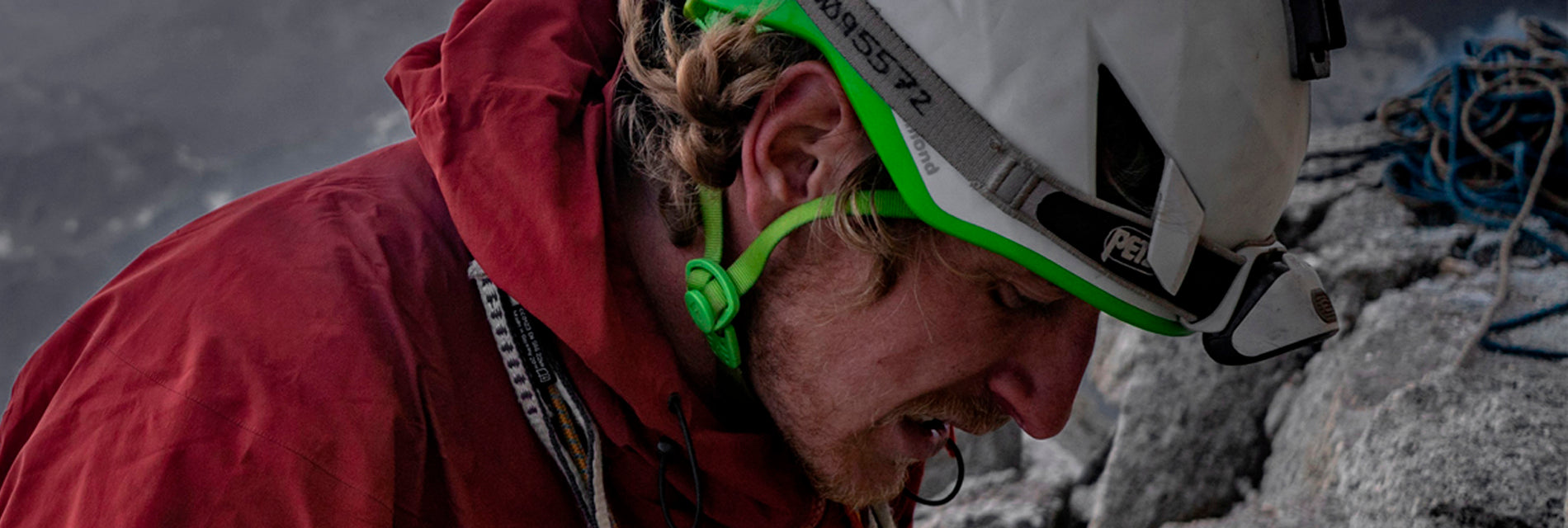
THE NORTH FACE OF THE DRU IS NO PLACE TO BE IN A STORM. now on the summit, with Racks buzzing in the electrically charged air, focus turns to finding a safe descent as thunder and lightning approach.
We now stood on the knife edge col between the two Drus. Looking down the Grand Couloir it seemed a simple escape off the mountain, instead of climbing another four pitches to ascend the Grand Dru and abseil the standard route. But we decided it was a case of working harder for a safer option, so abandoned any thoughts of the couloir and committed to the Grand Dru. Later that night, back at the hut, we were very grateful we took this decision as we stripped off our dripping clothes. Had we taken the couloir, we would have been stuck in the storm and five hours away from shelter.
As we progressed lower down the south face the hail turned into sleet and then into rain. Ledges coated in snow now trickled with water. The runoff gained momentum and I got a mouthful of much needed fresh water. Within minutes it had become a vertical river now flowing down the face. We stood in the watershed fixing our ropes, water running down our sleeves and into our boots.
THE NORTH FACE OF THE DRU
The north face of the Petit Dru, first climbed in 1935 by P Allain and R Leininger, is considered one of the six great north faces of the Alps. It's regarded as a testpiece route, despite the advancement of climbing equipment since its first ascent.
We decided to bivvy early at one of the most exposed and beautiful spots on the mountain, although the view would not last long as the clouds closed in around us.
Dave told a story about a memorably uncomfortable night on a patrol exercise in Kinlochleven, in the west highlands of Scotland a few years ago. We were both on selection to join a specialist reconnaissance unit in the Royal Marines. Everything was soaked, the pitch black hid the uneven ground and streams and roots tried to tackle us to the ground with every step. We looked back at our military careers, drawing strength in the knowledge of what we’d dealt with in the past.
Abseiling in this storm was no exception. Even though there was objective danger, the discomfort and the exhaustion receded, allowing us to keep working efficiently together.
As we progressed lower down the south face the hail turned into sleet and then into rain. Ledges coated in snow now trickled with water. The runoff gained momentum and I got a mouthful of much needed fresh water. Within minutes it had become a vertical river now flowing down the face. We stood in the watershed fixing our ropes, water running down our sleeves and into our boots.
The next morning we traversed the Mer de Glace and hauled ourselves up the ladders back to the Montenvers train. Bloodied hands and ripped clothes, our heads hung low as we walked past freshly rested alpinists heading for their chosen route. As they looked our way, I wondered if they secretly wished they were us: objective completed, worn out but content, and now heading into the valley for a burger and revelry in what had just been achieved. We walked on, slumped, tired and hungry with our heavy packs digging into our shoulders.
Tim Howell is a member of the Jöttnar Pro Team. Learn more about him here.
